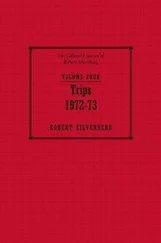Robert Walsh - Constantinople and the Scenery of the Seven Churches of Asia Minor
Здесь есть возможность читать онлайн «Robert Walsh - Constantinople and the Scenery of the Seven Churches of Asia Minor» — ознакомительный отрывок электронной книги совершенно бесплатно, а после прочтения отрывка купить полную версию. В некоторых случаях можно слушать аудио, скачать через торрент в формате fb2 и присутствует краткое содержание. Жанр: foreign_prose, foreign_home, История, foreign_antique, на английском языке. Описание произведения, (предисловие) а так же отзывы посетителей доступны на портале библиотеки ЛибКат.
- Название:Constantinople and the Scenery of the Seven Churches of Asia Minor
- Автор:
- Жанр:
- Год:неизвестен
- ISBN:нет данных
- Рейтинг книги:5 / 5. Голосов: 1
-
Избранное:Добавить в избранное
- Отзывы:
-
Ваша оценка:
- 100
- 1
- 2
- 3
- 4
- 5
Constantinople and the Scenery of the Seven Churches of Asia Minor: краткое содержание, описание и аннотация
Предлагаем к чтению аннотацию, описание, краткое содержание или предисловие (зависит от того, что написал сам автор книги «Constantinople and the Scenery of the Seven Churches of Asia Minor»). Если вы не нашли необходимую информацию о книге — напишите в комментариях, мы постараемся отыскать её.
Constantinople and the Scenery of the Seven Churches of Asia Minor — читать онлайн ознакомительный отрывок
Ниже представлен текст книги, разбитый по страницам. Система сохранения места последней прочитанной страницы, позволяет с удобством читать онлайн бесплатно книгу «Constantinople and the Scenery of the Seven Churches of Asia Minor», без необходимости каждый раз заново искать на чём Вы остановились. Поставьте закладку, и сможете в любой момент перейти на страницу, на которой закончили чтение.
Интервал:
Закладка:
EMPERORS AND SULTANS OF CONSTANTINOPLE,
FROM THE DEDICATION OF THE CITY TO THE PRESENT DAY
GREEK DYNASTY
Family of Constantine
Flavius Valerius Aurelius Constantinus I. was born in Britain, A.D. 272; crowned at Rome, 306; transferred the seat of empire to Constantinople, and dedicated the city to Christ, 330; died 337, after a reign of thirty years and nine months. The place of his birth is doubtful; by some said to be Dacia; by others, Britain, of which his father was governor, where he married Helena, a British lady. Among other evidence is the panegyric of Eumenes, “Oh, Britain! blessed of all lands, who first beheld Cæsar Constantinus,” &c. Constantine was esteemed an eloquent preacher, and one of his sermons has come down to us. He left behind him three sons, who succeeded him.
Flavius Julius Constantinus II. Junior, succeeded his father: he was born at Arles, 312; crowned, 337; and was killed in 340 in battle, and his body cast into the river Alsa.
Flavius Julius Constantinus was born in Pannonia, 318; crowned, 326; and died of apoplexy, 361.
Flavius Julius Constans I. was born 330; crowned, 333; and died, 350. The manner of his death is disputed: he either was killed in battle, or put an end to his own life, to escape his enemies.
Flavius Claudius Julianus, nephew of Constantine the Great, was born at Constantinople in 332; crowned, 361; and died, 363. He was killed in battle in Persia, by an arrow from a Persian horseman. He endeavoured to extinguish Christianity, and obtained the name of the Apostate . In him the family of Constantine terminated.
Family of Jovian
Flavius Jovianus was born in Pannonia in 324; crowned, 363; and died, 364. He was suffocated by the fumes of charcoal. He revived Christianity, but lived only seven months and twenty-one days after he came to the throne.
Family of Valentinianus
Flavius Valerius Valentinianus I. was born in Pannonia in 321; crowned, 364; and died, 375, of apoplexy.
Flavius Gratianus was born in Belgium in 359; crowned, 367; and killed in battle, 385. The empire was now divided into Eastern and Western; Valentinianus II. was nominated to the latter, and Valens to the former.
Flavius Valens was born in Pannonia in 328; crowned, 376; and burnt to death in a cottage in Thrace by the Goths, 378.
Family of Theodosius
Flavius Theodosius I. was born at Seville in Spain in 335; crowned, 379; and died, 395, of a dropsy. He obtained the name of the Great for his achievements. Among others, he restored peace in Britain, when disturbed by the Picts. To encourage the arts, he erected a splendid column at Constantinople, to rival that of Trajan at Rome. It was cast down by an earthquake, and no longer exists.
Flavius Arcadius was born in 379; crowned, 395; and died, 408. He followed his father’s example in erecting a splendid column: both have been prostrated by earthquakes. His brother Honorius succeeded to the Western empire.
Flavius Theodosius II. junior, was born in 401; and died, 450. He was nominated to the empire the year after his birth. He reestablished public schools at Constantinople, with a view to revive literature, and published the Theodosian code of laws. In his reign the Romans abandoned Britain, never to return.
Marcianus was born in Thrace, of obscure parents, in 387; crowned, 450; and died, 456. He erected a pillar at Constantinople, which still stands. In early life, he found the body of a man, and buried it; but he was accused of the murder, and would have been executed, had not the real murderer appeared, and saved him.
Family of Leo
Flavius Leo I., (Macela,) was a native of Thrace, called to the empire in 457, and died in 474, after a reign of seventeen years and six months. He was the first Christian potentate of the East crowned by an ecclesiastic. After him, the ceremony was generally performed by the patriarch. He obtained the name of the Great .
Flavius Leo II. minor, was born 457; and died 474, aged 17, having reigned but ten months. He was the grandson of Leo I.
Flavius Zeno, (Tarasicodista,) was born in Isauria, in 426, succeeded Leo II. as sole emperor, and died in 491, having reigned seventeen years. Some affirm he was buried alive by his wife. The term Tarasicodista was an Isaurian name, which he changed for Zeno. Under him, the Western Empire was entirely destroyed, and Odoacer, king of the Heruli, was proclaimed king of Italy. For fifty years after, till the time of Justinian, the reigns of the emperors are obscure and indistinct.
Family of Anastatius
Flavius Anastatius, I. (Dicorus,) was born at Dyrrachium, in 430, and was killed by lightning in his palace in 518, having reigned twenty-seven years and eleven months. He was distinguished for running a wall from the Euxine to the Propontis, and including a triangular space, called the “Delta of Thrace.”
Family of Justinus Thrax.
Flavius Anicius Justinus I. was born in 450, in Illyria, called to the throne on the death of Anastatius, and died in 527, after a reign of eight years and seven months.
Flavius Anicius Justinianus I. was born in Dacia, in 482, and died in 565, after a long reign of thirty-seven years and seven months, which was devoted to useful objects. Besides the erection of the church of St. Sophia, he introduced the culture of silk into Europe, and caused to be drawn up the codes, pandects, institutes, and, a few years after, the digest of laws, forming a system of civil jurisprudence, which is an everlasting monument of his reign. Under him, Proclus, a second Archimedes, set fire to the Gothic fleet by means of a concave mirror of brass.
Flavius Anicius Justinus II. junior, (Curopalata,) was born in Thrace, crowned on the death of his uncle Justinian, and died in 578, after a reign of twelve years and ten months. He had been superintendent of the palace, and hence the title Curopalata.
Family of Tiberius
Flavius Anicius Tiberius, I. called the New Constantine, was born in Thrace, and died in 582, after a reign of three years and ten months.
Flavius Mauricius Tiberius II. was born in Cappadocia, in 539, and was killed in 602, having reigned twenty years and three months. In his reign Augustine and his monks proceeded to preach Christianity in Britain, and the Saxon heptarchy commenced.
Family of Phocas
Flavius Phocas was crowned in 602; he died in 610, after a reign of eight years. He murdered his predecessor Mauricius, and decapitated him and his five children: he was himself assassinated by his successor Heraclius. He is represented as a monster among the emperors: his person small and deformed; his hair and eyebrows red and shaggy; and his cheeks disfigured with scars; his temper was savage; his pleasures brutal; and he was grossly ignorant, not only of letters, but his own profession−war. From the time of Justinian, the pleadings of the courts had been in Latin, but from the reign of Phocas, they were held in Greek, and the writings formed a barbarous mixture of Greek and Latin characters.
Family of Heraclius
Flavius Heraclius, son of the præfect of Africa, sailed to Constantinople, and having put Phocas to death, was crowned in 610. He died in 641, of dropsy, after a reign of thirty years and five months. He was distinguished for his conquests over the Persians, and for his pilgrimage to Jerusalem to restore the true cross; the ceremony resulting from it is still called “the Elevation of the Cross.” In his reign Mohammed fled from Mecca to Medina, and the era of the Hegira commenced.
Читать дальшеИнтервал:
Закладка:
Похожие книги на «Constantinople and the Scenery of the Seven Churches of Asia Minor»
Представляем Вашему вниманию похожие книги на «Constantinople and the Scenery of the Seven Churches of Asia Minor» списком для выбора. Мы отобрали схожую по названию и смыслу литературу в надежде предоставить читателям больше вариантов отыскать новые, интересные, ещё непрочитанные произведения.
Обсуждение, отзывы о книге «Constantinople and the Scenery of the Seven Churches of Asia Minor» и просто собственные мнения читателей. Оставьте ваши комментарии, напишите, что Вы думаете о произведении, его смысле или главных героях. Укажите что конкретно понравилось, а что нет, и почему Вы так считаете.












